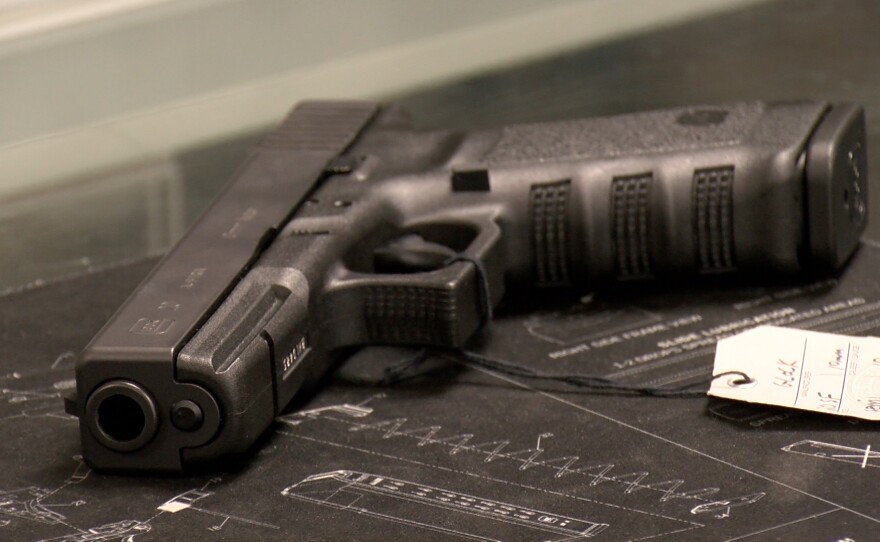At the onset of the pandemic, San Diego residents turned out in droves to gun shops — worried that the deadly virus would cause a breakdown of civil society. While the worst fears of gun buyers weren’t realized, there has been a significant rise in gun violence here and elsewhere.
On Friday morning in City Heights, Mayor Todd Gloria marked Gun Violence Awareness Day, part of a national day of action meant to highlight the impact of gun violence on communities.
“Let’s be really clear. Gun violence is an epidemic in this country. In many ways it’s unique to this country,” Gloria said. “And that’s why we’re here. Because we know it doesn’t have to be this way. We want to see change in America.”
Homicides in San Diego were up 35% in 2020 from the prior year, and two-thirds of the killings involved a gun.
Chief Nisleit said a pursuit with a drunk driver on Thursday night in City Heights ended with a recovery of a ghost gun. A ghost gun is assembled with parts from multiple guns so it can’t be traced through firearm registries.
Approaches to stemming gun violence in San Diego have differed. City Attorney Mara Elliot has says the county leads California in gun confiscations under the state’s Red Flag Law, which allows law enforcement to proactively take guns away from people who are at risk of committing violence. In 2020, county authorities confiscated guns in 483 separate instances.
RELATED: City Leaders Begin ‘No Shots Fired’ Program To Reduce Gun Violence
Bishop Cornelius Bowser helps lead Shaphat Outreach, a San Diego faith-based organization that advocates for alternatives to the punitive approach law enforcement takes toward people likely to engage in gun violence. For example, it works with active gang members to mediate disputes in a way that avoids violence
“That’s how you prevent violence, that’s how you intervene in the violence. You go to those individuals that are involved in it and help them,” Bowser told KPBS. “Would everyone listen? No. But data and research has shown that you can have an impact and decrease violence if you reach that population that’s committing the violence.”
Bowser is working with city officials in hopes that they will allocate further funding for his group.







